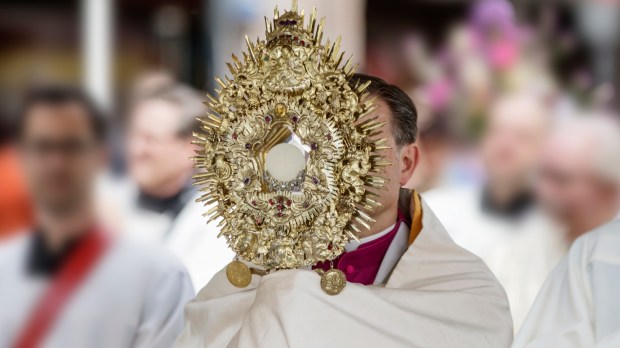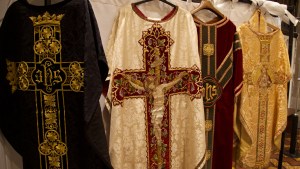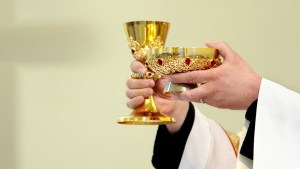During a Eucharistic Benediction liturgy, the priest or deacon puts on a special cloth veil that covers his shoulders and hands. He then approaches the altar and gently takes the monstrance, which holds the consecrated host, and turns to the people to give them a blessing in the sign of the cross.
Priests and deacons customarily give blessings at the conclusion of a liturgical function, but this blessing is different. The veil they wear signifies the exact source of the blessing.
The cloth is called a “humeral veil,” and according to the Catholic Encyclopedia, it has a specific length and various special features.
This is the name given to a cloth of rectangular shape about 8 ft. long and 1 1/2 ft. wide … The edges are usually fringed, while a cross, with the name “Jesus” or some other representation, adorns the center … The humeral veil is worn so as to cover the back and shoulders — hence its name — and its two ends hang down in front. To prevent its falling from the shoulders, it is fastened across the breast with clasps or ribbons attached to the border.
The humeral veil is worn during Eucharistic Benediction by the priest to signify that it is not the priest who is blessing the people, but Jesus Christ, truly present under the appearance of bread.
The priest or deacon “conceals himself” with the veil, and directs everyone’s attention to Jesus, making him visibly front and center.
The tradition of the humeral veil is a beautiful one and is a great reminder of Jesus’ presence in the Eucharist. He is the one who blesses us at Benediction.



